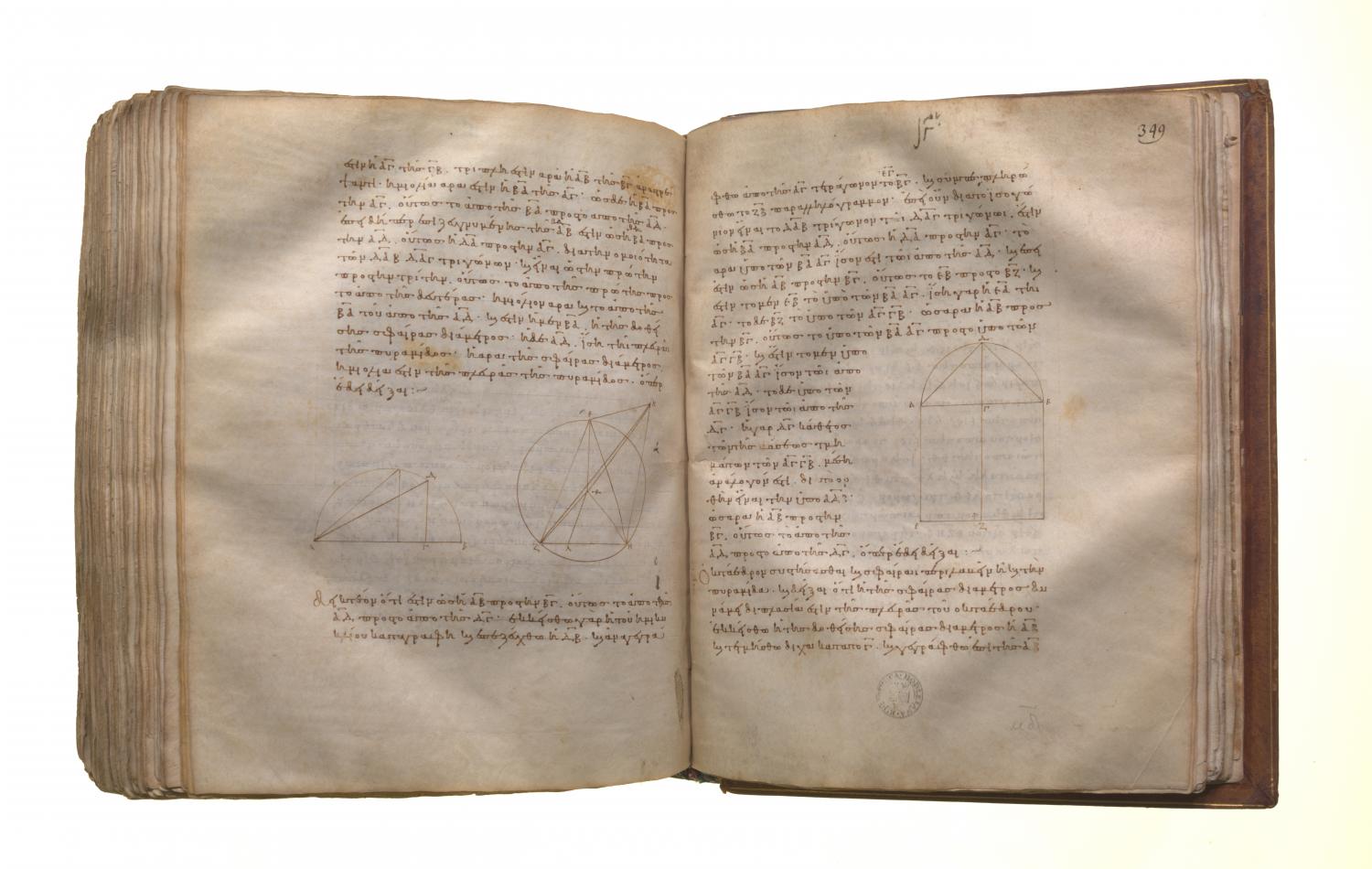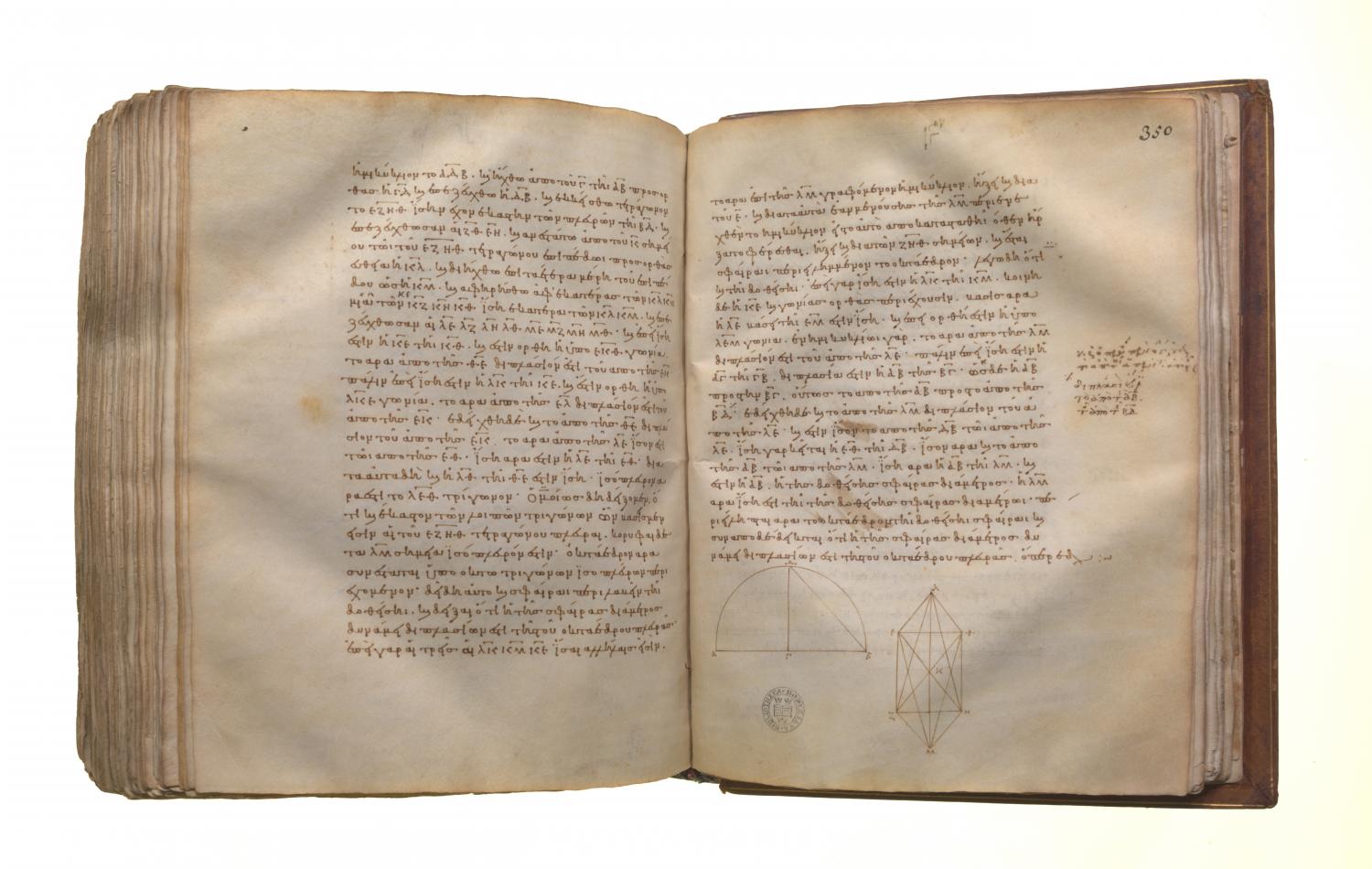Regular solids: Book 13 Proposition 14
Translations
To construct an octahedron and comprehend it in a sphere, as in the preceding case; and to prove that the square on the diameter of the sphere is double of the square on the side of the octahedron. Let the diameter AB of the given sphere be set out, and let it be bisected at C; let the semicircle ADB be described on AB, let CD be drawn from C at right angles to AB, let DB be joined; let the square EFGH, having each of its sides equal to DB, be set out, let HF, EG be joined, from the point K let the straight line KL be set up at right angles to the plane of the square EFGH [XI. 12], and let it be carried through to the other side of the plane, as KM; from the straight lines KL, KM let KL, KM be respectively cut off equal to one of the straight lines EK, FK, GK, HK, and let LE, LF, LG, LH, ME, MF, MG, MH be joined. Then, since KE is equal to KH, and the angle EKH is right, therefore the square on HE is double of the square on EK. [I. 47] Again, since LK is equal to KE, and the angle LKE is right, therefore the square on EL is double of the square on EK. [id.] But the square on HE was also proved double of the square on EK; therefore the square on LE is equal to the square on EH; therefore LE is equal to EH. For the same reason LH is also equal to HE; therefore the triangle LEH is equilateral. Similarly we can prove that each of the remaining triangles of which the sides of the square EFGH are the bases, and the points L, M the vertices, is equilateral; therefore an octahedron has been constructed which is contained by eight equilateral triangles. It is next required to comprehend it in the given sphere, and to prove that the square on the diameter of the sphere is double of the square on the side of the octahedron. For, since the three straight lines LK, KM, KE are equal to one another, therefore the semicircle described on LM will also pass through E. And for the same reason, if, LM remaining fixed, the semicircle be carried round and restored to the same position from which it began to be moved, it will also pass through the points F, G, H, and the octahedron will have been comprehended in a sphere. I say next that it is also comprehended in the given sphere. For, since LK is equal to KM, while KE is common, and they contain right angles, therefore the base LE is equal to the base EM. [I. 4] And, since the angle LEM is right, for it is in a semicircle, [III. 31] therefore the square on LM is double of the square on LE. [I. 47] Again, since AC is equal to CB, AB is double of BC. But, as AB is to BC, so is the square on AB to the square on BD; therefore the square on AB is double of the square on BD. But the square on LM was also proved double of the square on LE. And the square on DB is equal to the square on LE, for EH was made equal to DB. Therefore the square on AB is also equal to the square on LM; therefore AB is equal to LM. And AB is the diameter of the given sphere; therefore LM is equal to the diameter of the given sphere.

